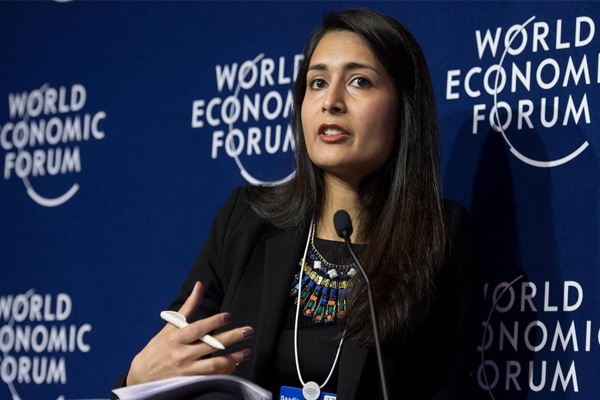Another generation of women will have to wait for gender parity, according to the World Economic Forum’s Global Gender Gap Report 2021.
As the impact of the COVID-19 pandemic continues to be felt, closing the global gender gap has increased by a generation from 99.5 years to 135.6 years. Progress towards gender parity is stalling in several large economies and industries. This is partly due to women being more frequently employed in sectors hardest hit by lockdowns combined with the additional pressures of providing care at home.
The report, now in its 15th year, benchmarks the evolution of gender-based gaps in four areas: economic participation and opportunity; educational attainment; health and survival; and political empowerment. It also examines the drivers of gender gaps and outlines the policies and practices needed for a gender-inclusive recovery.
SLOW PROGRESS
The deterioration in 2021 is partly attributed to a widening political gender gap in several large population countries. Despite over half of the 156 indexed countries registering an improvement, women still hold only 26.1% of parliamentary seats and 22.6% of ministerial positions worldwide. On its current trajectory, the political gender gap is expected to take 145.5 years to close, compared to 95 years in the 2020 edition of the report, an increase of over 50%.
The economic gender gap has seen only a marginal improvement since the 2020 edition and is expected to take another 267.6 years to close. The slow progress is due to opposing trends; while the proportion of women among skilled professionals continues to increase, income disparities persist and few women are represented in managerial positions.
CLOSING GAPS IN EDUCATION & HEALTH
Although these findings are sobering, gender gaps in education and health are nearly closed. In education, while 37 countries have reached gender parity, it will take another 14.2 years to completely close this gap due to slowing progress. In health, over 95% of this gender gap has been closed, registering a marginal decline since last year.
“The pandemic has fundamentally impacted gender equality in both the workplace and the home, rolling back years of progress. If we want a dynamic future economy, it is vital for women to be represented in the jobs of tomorrow. Now, more than ever, it is crucial to focus leadership attention, commit to firm targets and mobilize resources. This is the moment to embed gender parity by design into the recovery,” stated WEF’s Managing Director Saadia Zahidi.

COVID-19 IMPACT ON WOMEN
The pandemic has had a more negative impact on women than men, with women losing jobs at higher rates (5% compared to 3.9% among men, according to the International Labour Organization), partly due to their disproportionate representation in sectors directly disrupted by lockdowns, such as the consumer sector. Data from the US also indicates that women from historically disadvantaged racial and ethnic groups are worst affected.
Data from an Ipsos survey suggests that when care establishments closed, housework, childcare and eldercare responsibilities fell disproportionately on women, contributing to higher levels of stress and lower levels of productivity. As the job market recovers, LinkedIn data shows that women are being hired at a slower rate in multiple industries. They are also less likely to be hired for leadership roles, resulting in a reversal of up to two years’ progress.

WOMEN’S REPRESENTATION IN EMERGING JOBS
Sectors with historically low representation of women are also those with fast-growing “jobs of tomorrow”. In cloud computing, for example, women make up 14% of the workforce; in engineering, 20%; and in data and artificial intelligence, 32%, and it is more difficult for women to switch into these emerging roles than men. The report offers new metrics for tracking progress on closing gender gaps in the jobs of tomorrow. While care and education roles also offer areas of future growth and women have stronger representation, they are often lower-paid roles than other jobs of tomorrow.
“Women aren’t well represented in the majority of fast-growing roles, which means we are storing up even bigger gender representation problems as we emerge from the pandemic. These roles play a significant part in shaping all aspects of technology and how it is deployed in the world,” according to Sue Duke, Head of Global Public Policy, at LinkedIn. “We simply have to have women’s voices and perspectives represented at this foundational stage, especially as digitisation is accelerating. Companies and governments need to build diversity, equity and inclusion into their plans for recovery. Assessing candidates on their skills and potential, and not just their direct work experience and formal qualifications, is central to that. Skills-based hiring is key if we’re going to make our economies and societies more inclusive.”

Image credit: Jopwell, Pexels
SHAPING A GENDER EQUAL RECOVERY
The pandemic has “exasperated the inequities on household responsibilities, compensation mechanisms and employment opportunities, even more so among specific groups of women including care-givers and those in part-time and inflexible work environments,” added Natalie Lacey, Chief Operating Officer, Global Affairs at Ipsos. “The challenge for organisations is not just how to recover from the pandemic but to address the long-term systematic issues that create inequity across the workforce.”
The combined effect of accelerated automation, the growing “double shift” of work and care, in parallel with other labour market dynamics such as occupational segregation, are likely to have a long-term impact on economic opportunities for women, risking inferior re-employment prospects and a persistent drop in income. The report offers ways for countries to work towards closing their gender gaps. These include further investment in the care sector and equitable access to care leave for working men and women, policies and practices that proactively focus on overcoming occupational segregation by gender, effective mid-career skills-development policies for women, and managerial practices that embed sound, unbiased hiring and promotion practices.
For the 12th consecutive year, Iceland is once again the most gender-equal country in the world, followed by Finland, Norway, New Zealand and Sweden. Click here to read more.







































